Washington, DC – January 27, 2021 – Leveraging its leadership position in the hospitality industry nationwide, Omni Hotels & Resorts announces that it will host the nation’s premier conference on child and youth sex trafficking. In the coming three years, Omni will be the banner hotel and host for the highly regarded JuST Conference (Juvenile Sex Trafficking) that Shared Hope International has annually brought to the nation over much of the past decade.
Said Linda Smith, founder and president of Shared Hope, “Much of sex trafficking is conducted in, or facilitated through, the hospitality industry. This is where alert and trained employees can make a huge difference—literally, their awareness may actually save the life of a boy or a girl who is being targeted by a sex trafficker. Omni is an ideal partner due to the core values they hold as a corporation as well as the awareness and training programs they have already put in place.”
This exciting new relationship advances the fight against sex trafficking:
The partnership includes opportunities for Omni to participate in certain aspects of the conference which includes many survivors of sex trafficking along with disciplines such as law enforcement, healthcare, social work, policy and citizen advocates. By sponsoring elements of the conference including a networking reception, Omni will provide a unique opportunity for advocates to connect in a social setting outside structured workshops. As an authority with 25 years invested in addressing the issue of sex trafficking, Linda Smith will be available to speak at major Omni client events.
“Local market leadership is one of our core values, and we are committed to our partnership with Shared Hope International to ensure we’re supporting the communities in which we operate to end sex trafficking,” said Peter Strebel, president of Omni Hotels & Resorts. “Understanding that sex trafficking is very prevalent within the hospitality industry, we know we have to do our part in helping to educate our associates, who in turn, have the power to prevent these horrific acts.”
###
ABOUT OMNI HOTELS AND RESORTS
Omni Hotels & Resorts creates genuine, authentic guest experiences at 60 distinct luxury hotels and resorts in leading business and leisure destinations across North America. With more than 25 iconic golf courses and 16 award-winning spas featured in dynamic locales nationwide, every Omni proudly opens its doors to share the true spirit of its destination. Reflected through local color, personalized service, unique wellness options, signature restaurants and creative culinary offerings, Omni leaves a lasting impression with every guest and a heightened level of recognition and rewards delivered through its Select Guest® loyalty program. As a founding member of the Global Hotel Alliance, Select Guest is further expanded through the DISCOVERY loyalty program offering members additional global benefits. Omni is committed to reducing hunger and is on a mission through its Say Goodnight to Hunger initiative to provide millions of meals each year for food banks to feed children, families and seniors in communities in which it operates. Through its partnership with Shared Hope International, Omni is dedicated to the education and training of its associates to help combat human trafficking.
Omni Hotels & Resorts is the official hotel of the PGA TOUR® and PGA TOUR Champions. For information or to book accommodations, visit omnihotels.com or call 1-800-The-Omni.
MEDIA CONTACT: Brittany Peck, Director of Training, brittany@sharedhope.org, 360-830-6095.
Learn more about the 2021 JuST Conference: https://www.justconference.org/just-conference-2021/
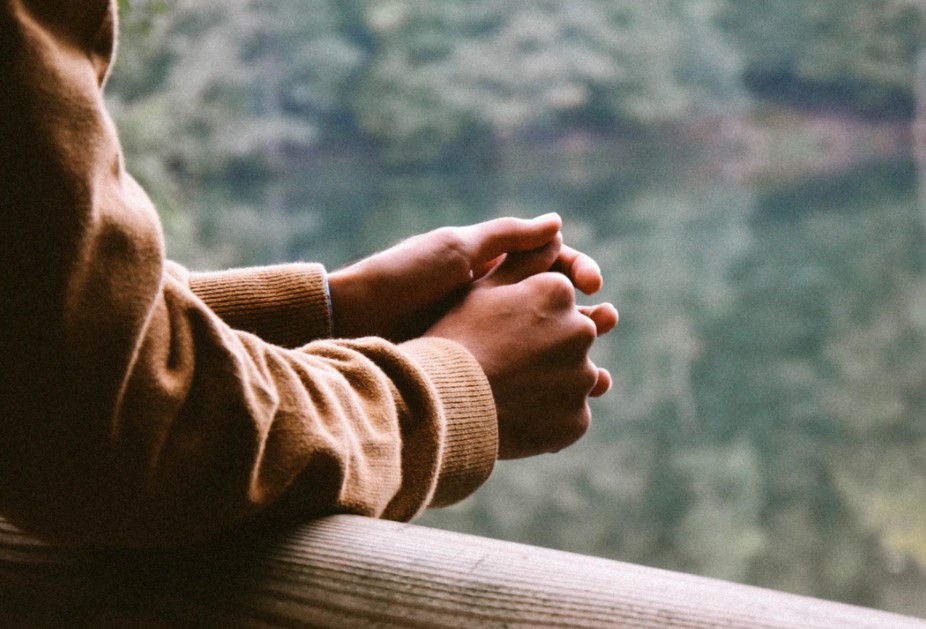 Spiritual Success through Daily Prayer
Spiritual Success through Daily Prayer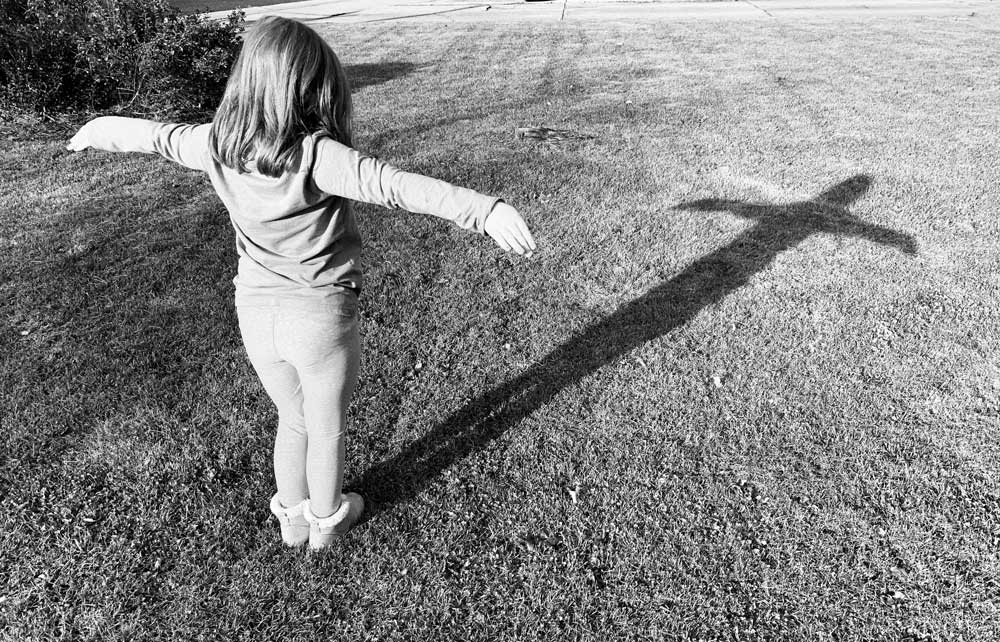
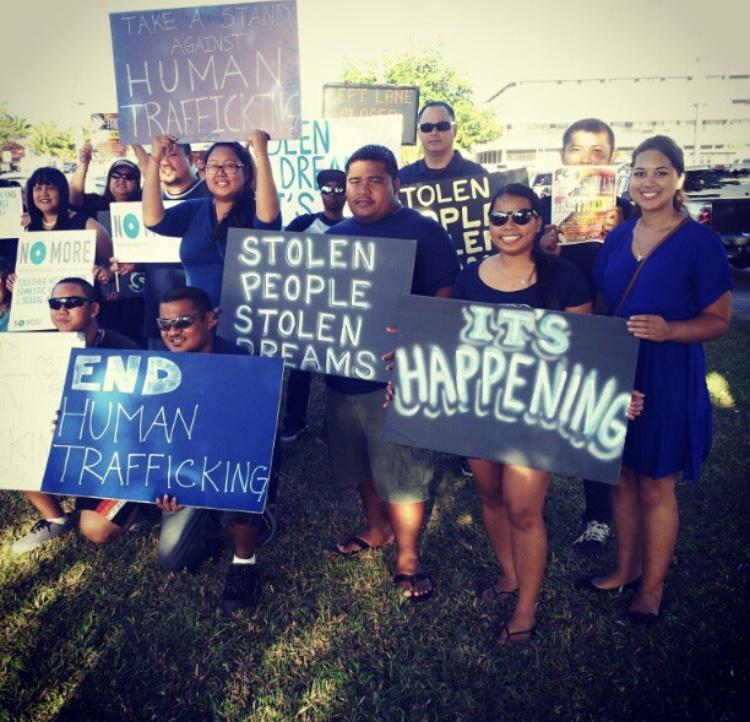 After hearing about the first known human trafficking case on Guam, I felt called to do something. I empowered others to spread awareness, volunteered as a victim advocate, and started a fund for survivors. I stood alongside students, local leaders, and members of the community at main intersections in Guam with a message saying, “It’s Happening”. This prompted people to ask what was happening and we would proceed to explain that human trafficking exists. We worked tirelessly to meet with local Rotary Clubs and Politicians to discuss the myths that often surround human trafficking, how to support survivors, and resources to educate others. I volunteered to assist the US Attorney of Guam and the local Human Trafficking Task Force. It was during our trip to Palau where I first met former Congresswoman and founder of Shared Hope International, Linda Smith. I was amazed at the work she was doing globally and continue to support her efforts to this day. As a soldier, I was able to help establish a Human Trafficking Task Force outside of Fort Detrick, Maryland. Throughout my career as a soldier, I coordinated training for hundreds of military personnel on the impact and signs of sex trafficking.
After hearing about the first known human trafficking case on Guam, I felt called to do something. I empowered others to spread awareness, volunteered as a victim advocate, and started a fund for survivors. I stood alongside students, local leaders, and members of the community at main intersections in Guam with a message saying, “It’s Happening”. This prompted people to ask what was happening and we would proceed to explain that human trafficking exists. We worked tirelessly to meet with local Rotary Clubs and Politicians to discuss the myths that often surround human trafficking, how to support survivors, and resources to educate others. I volunteered to assist the US Attorney of Guam and the local Human Trafficking Task Force. It was during our trip to Palau where I first met former Congresswoman and founder of Shared Hope International, Linda Smith. I was amazed at the work she was doing globally and continue to support her efforts to this day. As a soldier, I was able to help establish a Human Trafficking Task Force outside of Fort Detrick, Maryland. Throughout my career as a soldier, I coordinated training for hundreds of military personnel on the impact and signs of sex trafficking.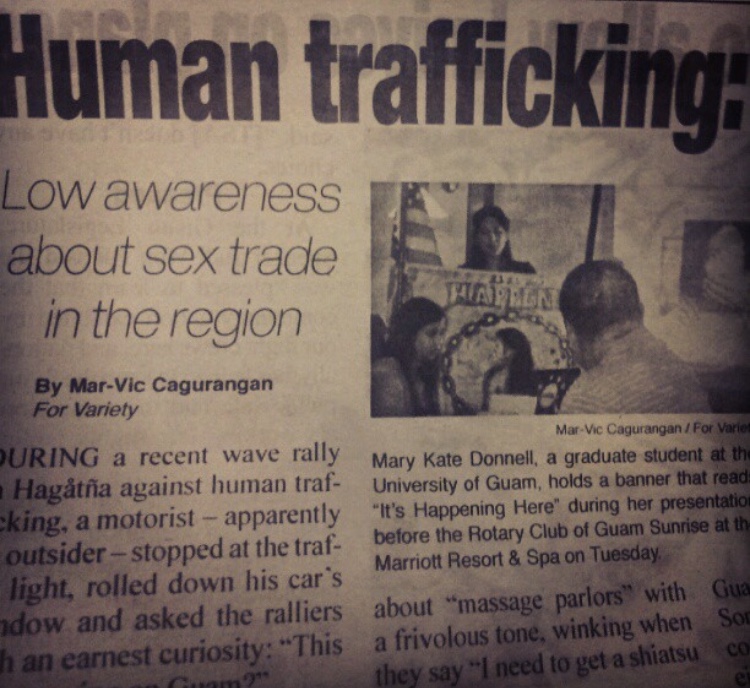 What if you had the resources to conduct training with those in your local community? If you are in the military, will you take the opportunity to train other servicemembers about human trafficking? Many of us lead busy lives, but there is a way to support and get involved in the fight against human trafficking. As a volunteer Ambassador of Shared Hope International, I provide knowledge and training to other servicemembers and my community. I am just one person but imagine how much more we could accomplish if we all answered the call to stop the demand of sex trafficking. While I was deployed, I had the privilege of providing awareness about human trafficking to fellow servicemembers and the host nation. Having a conversation is a great start in prevention and it could make all the difference to someone. This is not a fight just for those wearing the uniform, but a call to serve for everyone around the world.
What if you had the resources to conduct training with those in your local community? If you are in the military, will you take the opportunity to train other servicemembers about human trafficking? Many of us lead busy lives, but there is a way to support and get involved in the fight against human trafficking. As a volunteer Ambassador of Shared Hope International, I provide knowledge and training to other servicemembers and my community. I am just one person but imagine how much more we could accomplish if we all answered the call to stop the demand of sex trafficking. While I was deployed, I had the privilege of providing awareness about human trafficking to fellow servicemembers and the host nation. Having a conversation is a great start in prevention and it could make all the difference to someone. This is not a fight just for those wearing the uniform, but a call to serve for everyone around the world.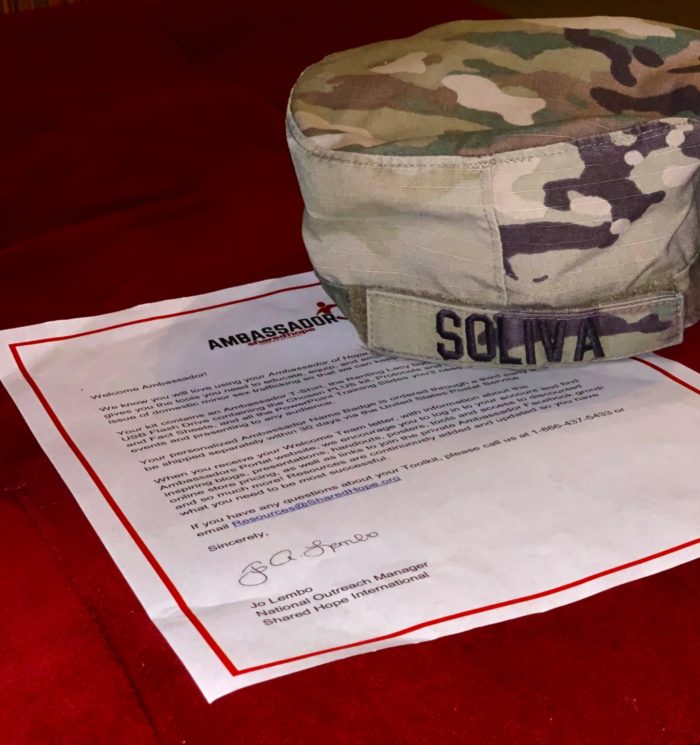 Things you can do right now:
Things you can do right now:





